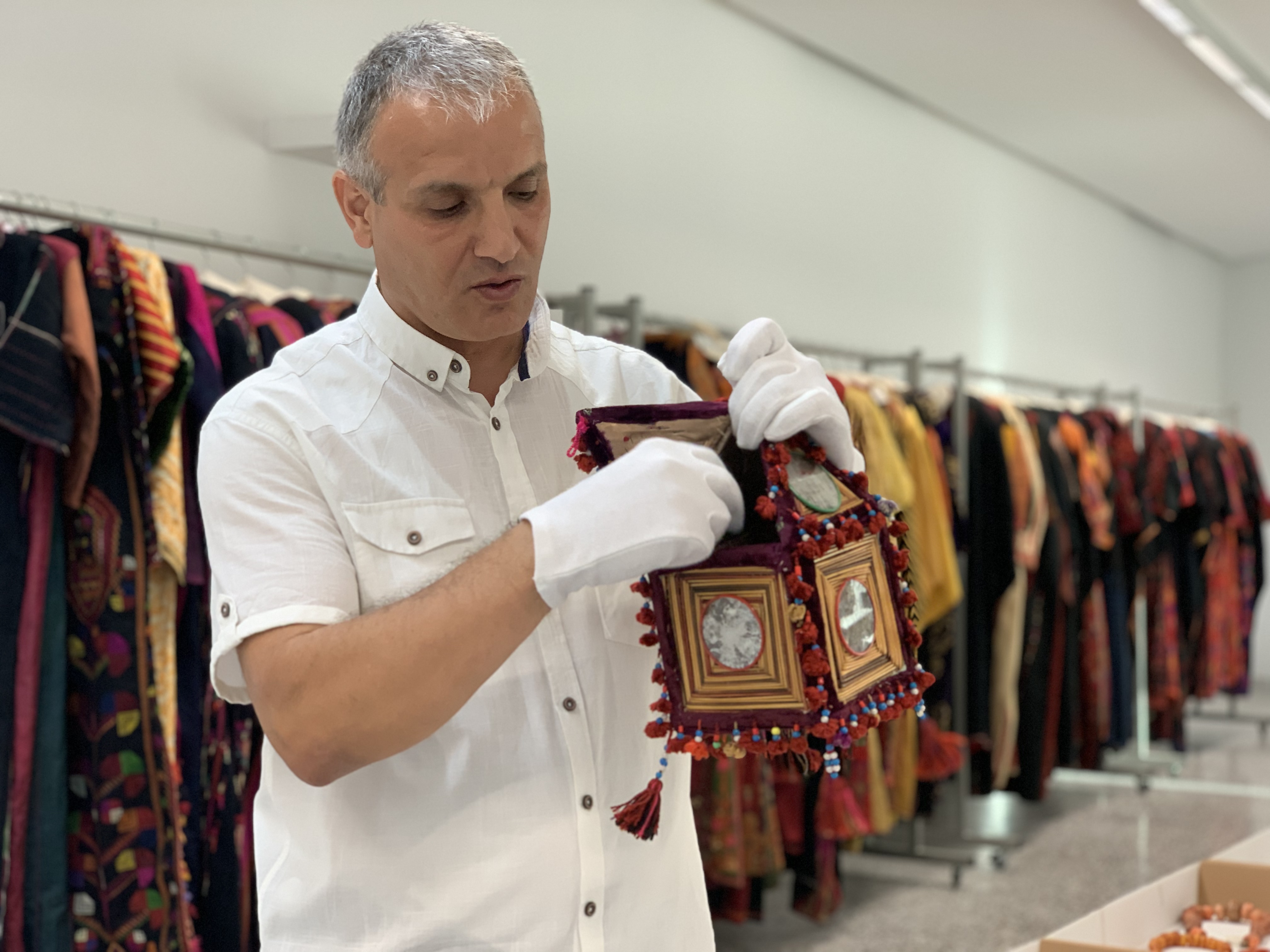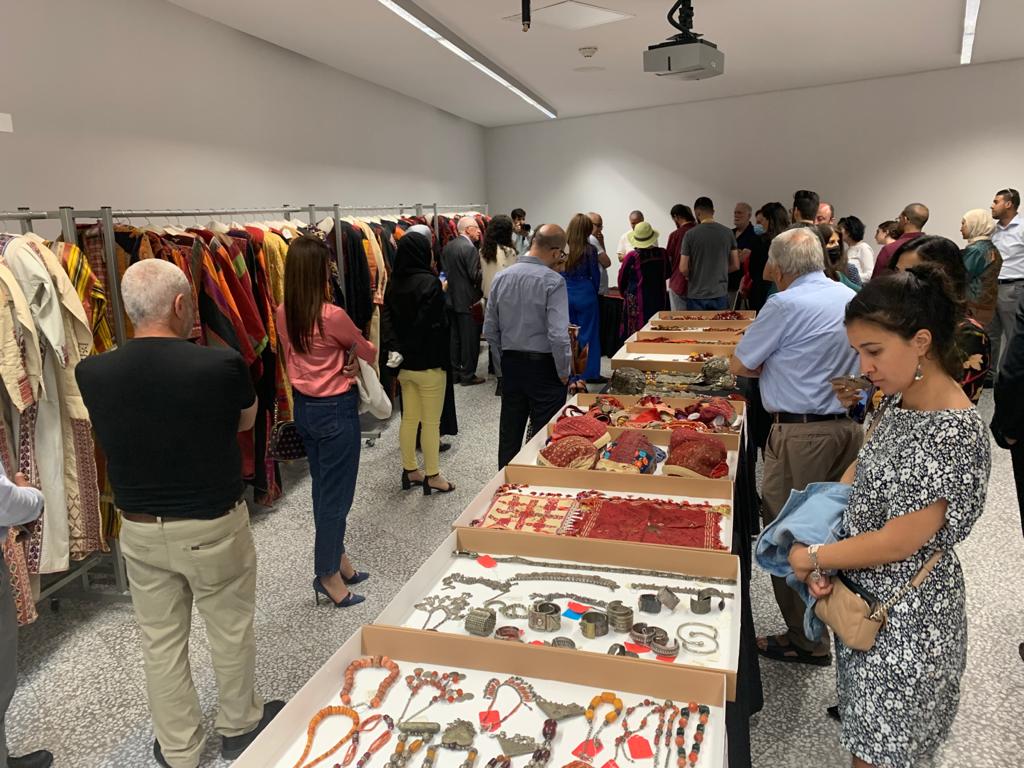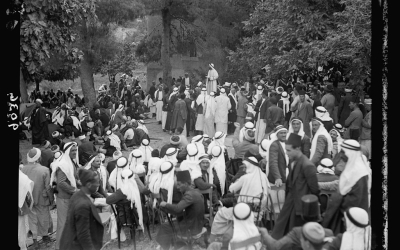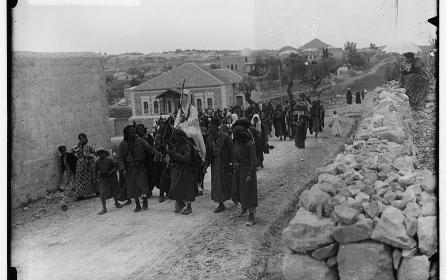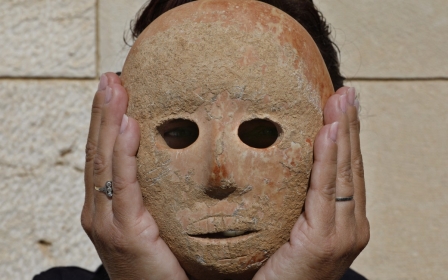Palestinian Museum unveils trove of historic dresses and cultural artefacts

The Palestinian Museum in the occupied West Bank town of Birzeit has unveiled a collection of 240 pieces made up of traditional Palestinian clothes, jewellery and headdresses.
Artefacts dating between 50 and 100 years old were put on display after a successful crowdfunding campaign paid for their return home to Palestine after decades spent half way across the world in the United States.
'Through this collection, we seek to reveal the depth and originality of this heritage, to protect it and depoliticise it by telling its true story'
- Baha Jubeh, registrar,
Palestinian Museum
The pieces include 80 thobes worn by Palestinian women, some of which date back at least 80 years, providing a glimpse into Palestinian couture before the Nakba, which saw more than 700,000 Palestinians expelled from their homes by Zionist gangs prior to and during the establishment of Israel in 1948.
“We celebrate today the arrival of a significant collection from the US to Palestine, a journey that symbolises the right of return by coming home,” said Baha Jubeh, the museum’s registrar.
Jubeh explained that the importance of this collection stems from the variety of cultural elements it contains, not only the dresses but also accessories and headwear, which originate in different parts of historical Palestine.
New MEE newsletter: Jerusalem Dispatch
Sign up to get the latest insights and analysis on Israel-Palestine, alongside Turkey Unpacked and other MEE newsletters
He added that, when studying the collection, he noticed the influence of other cultures, such as Syrian and Turkish, on the embroidery and clothing style.
Returning home
The historical collection was first preserved by a researcher, Abdulsamee Abu Omar, in Palestine before he moved it to the US for an exhibition. There the collection was acquired and preserved by three American-Palestinian women from the Committee for the Preservation of Palestinian Heritage (CPPH).
For more than 30 years, these women worked tirelessly to preserve the collection and exhibit it in galleries all over the US. Eventually, they decided that the items should be returned to Palestine, where they felt the cultural artefacts belonged, and so they entrusted the collection to the Palestinian Museum.
Besides restoring and preserving the collection, the Palestinian Museum aims to document the collection and study it, making information available to researchers.
"A thorough analysis of the elements of each piece provides a historical insight into the belief systems that play out through these artifacts,” said Jubeh, adding that the unveiling comes at a time when the idea of Palestinian heritage is under attack by some in Israel.
"Through this collection, we seek to reveal the depth and originality of this heritage, to protect it and depoliticise it by telling its true story. Our heritage doesn't need us to defend it; it stands for itself in its richness."
Every style of thobe embroidery is linked to a specific geographical region of Palestine, reflecting the history and the social life of each place. Patterns stitched into dresses also represent different functions and there are different styles for widows, brides, everyday use, and for occasions such as funerals and mourning events.
One particular thobe, which Jubeh found the most interesting, dates back 80 years and contains tears purportedly inflicted on the garment by its unknown owner who was overcome by grief.
Other notable items within the collection were silver coins, which were attached to head veils and were used as an expression of social status. There were also religious ornaments, such as amulets for protection, love and intimacy.
Fear of loss
While the collection is now safe in the hands of the museum, the process of acquiring it was not simple.
The fear that reigned in the minds of the museum’s creators was the expense involved in insuring it and the worry that the collection would be seized by the Israeli occupation authorities.
Samer Makhlouf, the museum’s human resources director, told MEE: “We had a tremendous fear that the collection would get stolen or deliberately sabotaged at the Israeli border crossing points.
“We had to come up with alternative solutions that would grant the safety of the collection at the Israeli border crossing, especially given that we are fighting a war over history and culture.”
Makhlouf said that the items were therefore brought in piecemeal to ensure they escaped the scrutiny of Israeli officers. He refused to elaborate on the specific methods used as the museum intends to use the same methods in the future.
According to the museum official, artefacts have previously gone missing with the Palestinians alleging that they were stolen and the Israelis saying that they had been lost.
“We were living in a nightmare until the whole collection soundly arrived in Palestine,” Makhluof said.
The museum’s success in bringing the collection back to Palestine is being celebrated not just by its curators.
Maha Abu Shousha, a Palestinian woman interested in Palestinian heritage and a collector of traditional areifacts, visited the museum to examine the newly arrived exhibit.
Abu Shousha told MEE that what is significant about this collection is that it left Palestine, only to return to it, explaining, “Every dress in this collection is a unique world. Every dress is hand-made by a Palestinian woman in which she stitched parts of her soul, taste, her world and social reality; and her relationship to her community.
“Every dress [thobe] in this collection is a storyteller, and this is why it is important to reclaim those dresses and preserve them, to explore and analyse their symbols and patterns.
“In those symbols, we can find a heritage of an entire generation.”
Middle East Eye delivers independent and unrivalled coverage and analysis of the Middle East, North Africa and beyond. To learn more about republishing this content and the associated fees, please fill out this form. More about MEE can be found here.


